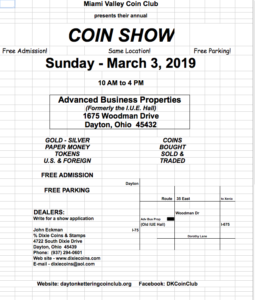Why Colored Ink On Our 1st Banknotes?
In 1861, when the government started printing demand notes, a green ink was use used on the seals on the front of the note and most of the back of the note. The green color gave the notes the name they were to be known by, “greenbacks”. This basic color design was repeated on 1862 and 1863 Legal Tender notes.
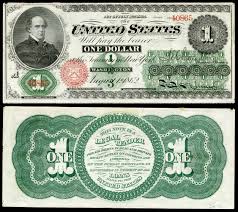
Legal Tender

Demand Note
The big question is why spend the money to issue notes with colored ink?
Simple: it was hard to counterfeit.
Today we have color printers that can easily duplicate US currency. Back in the 1860’s there was no easy way to recreate any color. Photography was in its infancy and all photos were shades black and white. Nobody had a camera that could take color pictures. So the government thought they were pretty smart by issuing notes containing green ink
May 2019 Club Meeting This Thursday
Our next meeting is this week, Thursday May 2nd. Please plan to attend and have some fun learning new things about coins , currency, and medals. Also, the Early American Copper convention is this Thursday, Friday, and Saturday.
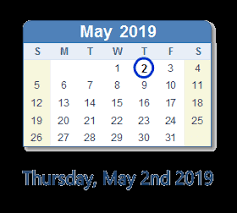
National Coin Week April 21-27, 2019
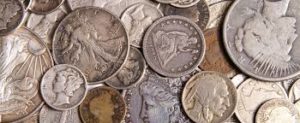
This year National Coin Week is going to feature the Great American Coin Hunt. Dealers from all across the country are going to be placing rare and valuable coins into circulation. The hope is that this coin release will spark the coin collecting hobby in non-collectors and especially younger people.
Here is a map of where coins are going to be mixed into circulation.
So make sure you pay with dollars and check out that change. You are liable to spot Indians, Buffaloes, silver dimes and quarters, and even some red and blue seal notes.
Also the Mint is releasing 10 million 2019 America the Beautiful Quarters with a first-ever “W” mint mark.
It should be a fun and interesting week!
April 4th Meeting
Thursday is our next Miami Valley Coin Club meeting. Come join us!
Learn something new, sell your extra coins, or buy the coin you may be missing!
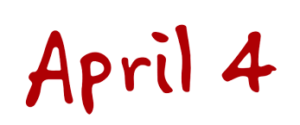
Anyone Can Make A Mistake, However…
An 1847 $500 banknote was certified by PMG (Paper Money Guaranty) and auctioned by Heritage Auctions in January 2016. In the auction the note was described as newly discovered and the only example of this type of notes issued between 1812 and the 1860’s. When the hammer fell, the note sold for $199,750.
By studying newspapers starting in 1847, a researcher found articles warning the public about counterfeit $500 Treasury notes. After a lot more research, the note ended up being an example of one of these 1847 counterfeits.
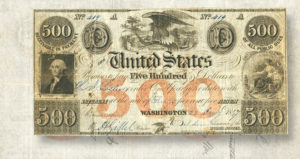
Someone paid $199,750 for a certified piece of currency only to find out later that it was a fake. As our ability to look back and research more and more continues to improve, how many other “certified” coins and pieces of currency will surface as fakes? It’s a scary thought. How many times have we, as collectors purchasing an expensive item, been told that we should make sure that a third party has certified the item?
The Value of My 1853 Three-Cent Silver… Then
The 3-Cent Silver coin, or Trime, was produced beginning in 1851 and minting of these coins continued through the year 1873. The Type I coins, 1851-1853, were coined in the millions of pieces. After 1853 mintage numbers never again attained that kind of volume.
In 1850 the public began hoarding silver coins. With small-value coins needed for commerce, the three-cent silver was born. The Type I coins were only 75% silver and 25% copper, an attempt to discourage melting coins for their silver content. They cost the mint less than 3 cents to produce and are the smallest U.S. coin ever minted. In 1854 the silver content was raised to 90% in an attempt to encourage circulation, but the coin was thinned down to keep it at the same value. My 1853 coin was one of 11.4 million struck that year.
3- Cent Prices in the 1850’s… what could I buy?
Postage stamps had been recently been reduced from 5 cents to 3 cents.
1/3rdpound of cheese
2 eggs – raw
1/3rdpound of bacon
½ yd. of calico fabric
I wonder how many times my coin was spent to mail a letter? Apparently it was spent a lot because my coin only grades out as Very Good or Fine.

In the 1850’s a common laborer only made $1.00 per day; that comes to about $0.125 per hour. So on the bright side, someone would give you around 4 trimes for every hour you worked. What a deal!
The 1853, once I added it to my collection, completes my Type I set; an 1851, 1851-O, and an 1852. Now I have an 1853.
The Day I Lost My Home But Gained a Community
This is a story too good to pass by. It is a great reflection on all of us as part of the coin collecting community. Please follow this link and read Joe Best’s story.
It’s A Token, Not A Bird
It’s Conder, not Condor!
In the later part of the 18thCentury in the British Empire, including England, Ireland, Anglesey, Wales, and Scotland, there was a shortage of small denomination coinage. Because the government basically ignored the problem, and it became difficult to conduct normal business transactions, private business owners and merchants took matters into their own hands by issuing Conder Tokens. At the time they were referred to as Provincial Coins.
The tokens were re-named after James Conder, who was an early collector and cataloguer of them. Most of these tokens were minted from 1787 to 1804. They resemble our Hard Times Tokens in that many of them carried political captions, denouncing some area of the British government.
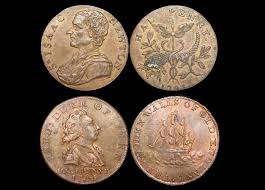
Collecting Conder Tokens is becoming more and more popular today. A great number of well-preserved examples can be found. On April 13th, Smith Family Auctions, a Germantown company, will auction off a number of Conder Tokens. If you have never seen a token like this, or would like to start, or add to a token collection, here’s your chance to find some Conder Tokens close to home.
Special 2019-W Lincoln Cent
The West Point Mint will strike three special issue Lincoln cents in 2019 bearing the “W” mintmark.
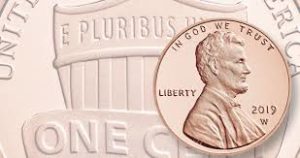
A standard proof version will be included with the 2019 proof set along with the ten regular coins of the set. A reverse-proof “W” Lincoln will be included in the silver proof sets (the other ten coins will have a San Francisco mintmark) due to be released at the end of April. The 20-coin Uncirculated Mint sets will include a 21stcoin, a 2019-W Lincoln cent with an uncirculated finish.
Black History & U.S. Coinage
America’s first African-American to appear on a commemorative coin, or any coin, was Booker T. Washington in 1946. The purpose was to raise money for maintenance of his memorial birthplace in Franklin County, Virginia. House Resolution 6528 Act passed Congress on August 7, 1946. Since then, other Black Americans have also made appearances on commemorative coins.
In 1997 Jackie Robinson was honored on a silver dollar coin and a five-dollar gold coin. Robinson was the first black player to play Major League Baseball.
The next year, 1998, Crispus Attucks, a stevedore or dockworker, the first person killed in the Boston Massacre, and thus the Revolutionary War, was honored on the Black American patriots coin.
In 2007 Little Rock Central High School and nine African-American students were honored on a one-dollar coin to highlight the desegregation of Arkansas schools. President Eisenhower sent the 101st Airborne Division of the Army to protect the rights of the nine students.
Then in 2014, the Mint issued the Civil Rights Act of 1964 commemorative coin honoring the signage into law of the bill by President Lyndon Johnson. The three African-American figures pictured on the obverse are not individually identified.
In April 2006, Congress awarded a Congressional Gold Metal to surviving members of the “Tuskegee Airmen”, the 761st Tank Battalion and the 452nd Anti-Aircraft Artillery Battalion, three all-black military units that served during and after World War II. Medal copies in bronze are available to the public.
How To Invest In Coins
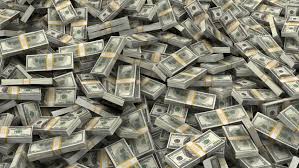
“If you want to make one million dollars investing in coins,
all you have to do is spend two million dollars!”
Next Meeting, Thursday February 7th, 2019!
See You There!

Does this look like one of our members?
Collecting Early Coppers
Early American copper coins were minted in larger quantities than any other denomination during their era, 1792-1857. Carrying around one hundred large cents, a dollars worth, would weigh almost three pounds. Half cents were struck in all but nine years; large cents were struck every year except 1815 and 1823. All half and large cents were minted in Philadelphia, there are no mint marks.
How is the best way to collect early American copper coins? It all depends on your preferences and patience. Here are some different ideas:
- Collect a complete date set.
- Build a collection by type.
- Collect one type only, but one of each year.
- Collect only one year, but every variety, or die marriage, of that year.
In order to maximize you enjoyment of collecting early copper coins, it is recommended that you follow these collecting tips:
- Collect the best coins you can afford. Focus on condition more than grade.
- The only time you should buy a “problem” coin is if it is so cheap that there is no way you could lose money on it or it is very rare and you can’t believe that you have the opportunity to own it.
- Buy the key coins first because they are only going to get more expensive and maybe out of your reach.
- Decide what grade you would be happy with and don’t buy coins that are worse or better than your target grade.
Remember, the fun is in running the race
and the thrill of the chase,
not just reaching the finish line.
A “Two Cent” Story
It lasted only ten years, a short time for most coins, from 1864 to 1873. The story goes that because of the shortage of coins caused by the civil war, the U.S. Mint was authorized to mint two cent pieces. That fact is possibly true, but the idea of a two cent coin was first proposed in 1806.
The first proposal called for a coin struck in a bullion alloy of mostly copper with a small amount of silver. Because coins struck in this composition were easily counterfeited, Congress decided not to authorize mintage of the coin.
Then in 1836 another proposal was made. Christian Gobrecht, the 3rd chief engraver at the Mint, and Franklin Peale, who at the time was titled “Melter and Refiner”, did composition testing. The counterfeiting issue was again the reason that the coin did not come to be.
In late 1863, Mint Director James Pollock recommended a two cent coin to be struck in “French Bronze”, 95% copper and 5% tin and zinc. Two different designs were submitted for consideration. One design featured the head of George Washington on the obverse, the other a large shield.
The original inscription on the ribbon read “God Our Trust” but Secretary of the Treasury, Salmon Chase preferred “In God We Trust”. Thus, the 1864 two cent piece became the first coin to carry the motto “In God We Trust”. The motto was added to silver coinage two years later.
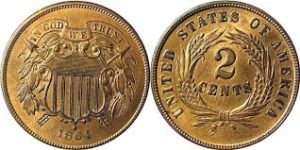
The prototype dies used small letters in the motto, subsequent strikes with regular dies used larger letters. So the 1864 coins are found with both small and large letters. PCGS reports that in Fine the 1864 small letter type is worth $425, the 1864 large letter type is worth $26.
The Young Coin Collector
“People just aren’t as interested in coin collecting as they used to be.”
Not true! Check auctions and coins for sale on eBay and you will find that some 90,000 coins are sold on average every day. It’s only the younger generation that isn’t as interested in coin collecting as they used to be. Kids and young adults say that coin collecting is just for “old people”.
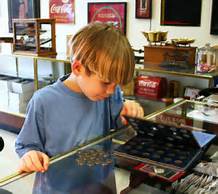
One of the biggest problems is that today’s circulation coins are tired and boring when it comes to design. The Mint has been striking Lincoln cents, virtually unchanged, for 110 years; Jefferson nickels since 1938; Roosevelt dimes for 73 years. Okay, Washington quarters have interested some younger collectors with the 50 States program, but even that theme is getting old.
Another issue is the vast numbers of each year’s mintage. Used to be, some coins were only struck in the thousands and hundreds of thousands. Today’s coins, for the most part, are struck in the billions. It will be a rare occurrence when one to today’s coins will be worth any real value in the future. And these will probably be related to some type of error.
So how do we interest today’s younger generations? Sell them low mintage commemoratives? I doubt it. Most of these commemoratives come with above average price tags. Today’s youngsters are probably not going to drop $59.95 on a commemorative that they shouldn’t really touch with their own hands. At least not consistently.
PCGS and NGC have sort of the right idea. Their registry sets, seen and tabulated on the internet, are a step in the right direction. The only problem with their idea is that all the “sets” that are tracked involve “world’s best” or “low-ball” sets which can be costly to assemble. Some type of digital collecting, trading, and tracking system may interest our newest “online” generation.
First Club Meeting Of 2019
Tonight is our 1st club meeting of this year. Hope everyone had a great holiday season and we’ll see you tonight. Don’t forget to bring any coins you want to auction off. Buyers will be present with all their leftover holiday cash…

New Dollar Coins Will NOT Be At The Bank
Guess what? The Mint’s new dollar coin series is only available from the Mint… or the secondary market. That’s now and until the series is scheduled to end in 2032! That also means no face-value coins for collectors.
You can only order these new dollars from the Mint. A 25-coin roll sells for $32.95 plus S&H, and $111.95 for a 100-coin bag. There is one coin design available now, from the Mint only, for $6.95 plus S&H, with 4 new designs each year through 2032.
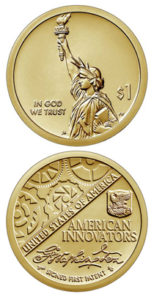
I, for one, am not a fan of this method. I have yet to order anything directly from the Mint, and maybe with the exception of the upcoming Apollo 13 coins, don’t anticipate doing so in the future. Actually, I’m not really interested in collecting golden dollar coins of any type. But that’s just my opinion.
Here’s a thought. At each club meeting a number of silver eagles are raffled off. How about the club buy a 25-coin roll of each new design as they become available and adding that coin to our raffles? Just an idea. What do you think?
The First American Innovation $1 Proof Coin
The United States Mint’s American Innovation $1 Coin Program is set to release its first coin on December 14, 2018. It will be minted at the San Francisco Mint.

The first coin features a lettered edge, a Proof finish with sharp relief and a mirror-like background with frosted foregrounds. The coin’s price is listed as $6.95 on the Mint’s website.
Christmas Party 2018
Thursday, December 6th, at 6:00pm is the Miami Valley Christmas get-together. Please plan to attend. It will be held at Archer’s, 2030 East Dorothy Lane, Kettering 45420, across the street from Applebee’s and Kroger.

Clubs and Associations
- American Numismatic Association
- American Numismatic Society
- British Numismatic Society
- Central Ohio Numismatic Association
- Central States Numismatic Society
- Florida United Numismatists
- Numismatic Society of India
- the Cincinnati Numismatic Association
- The Royal Canadian Numismatic Association
- The Royal Numismatic Society
Coin Links
- Boy Scouts Merit Badge
- Buffalo Nickels
- Bureau of Engraving and Printing
- Calculate your coin's gold, silver, or metallic worth
- Coins & Currency in Colonial America
- David Lawrence Rare Coins Reference Library
- Dayton Metro Library – Coin Books
- Fixing PVC damage
- Indian Head Cents
- Legandary Coins and Currency from the Smithsonian
- Medalblog
- Mints of the World
- Monnaie de Paris
- NapoleonicMedals.org
- raregoldcoins.com
- Royal Canadian Mint
- Smithsonian Institution Collection
- Starting a coin collection
- The Kittredge Collection
- The Perth Mint
- The Pobjoy Mint
- The Princeton University Numismatic Collection
- The Royal Mint
- United States Mint
- University of Virginia Coin Collection
- Where is my coin from?
Coin News
Miami Valley Coin Dealers
Speciality Clubs
- American Tax Token Society
- Barber Coin Collectors' Society
- Dayton Diggers Metal Detecting Club
- Early American Coppers
- Encased Collectors International
- Fly-In Club
- Liberty Seated Collector's Club
- Medal Collectors of America
- National Token Collectors Association
- Numismatic Bibliomania Society
- The Bust Half Nut Club
- The Civil War Token Society
- The Colonial Coin Collectors Club
- The Elongated Collectors
- The John Reich Collectors Society
- The Society of Paper Money Collectors
- The Token and Medals Society
- Unrecognised States Numismatic Society
- Worldwide Bi-Metallic Collectors Club

